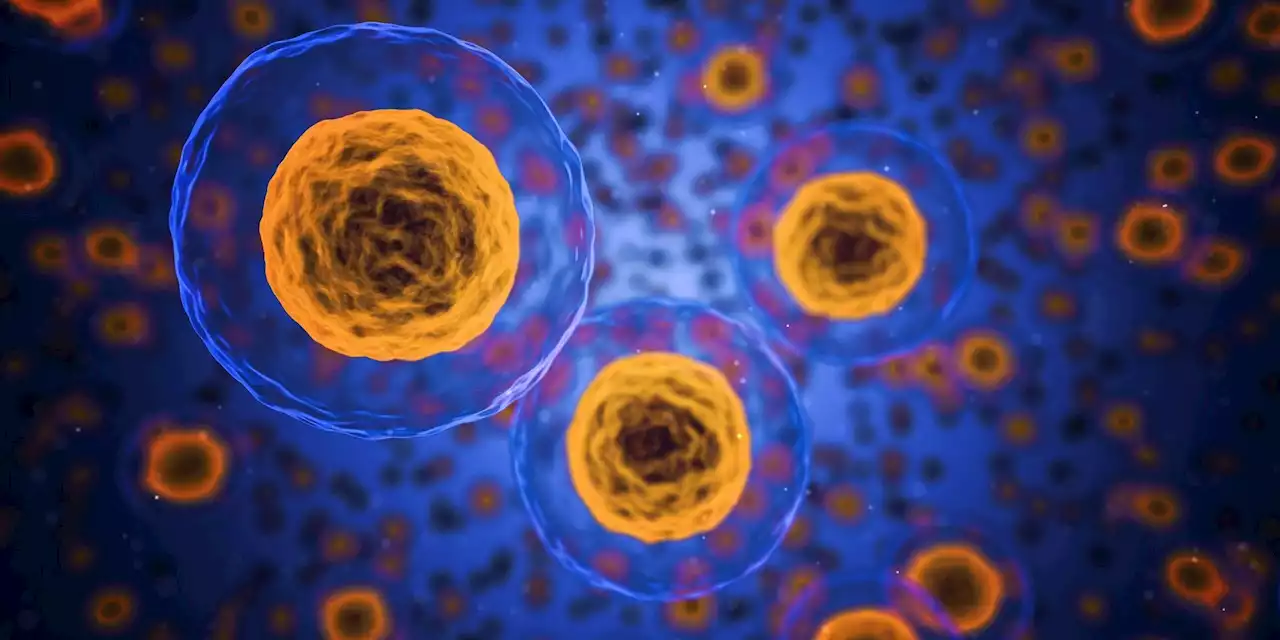A Review in Cancer Cell International summarizes the roles of long non-coding RNA and mRNA in clear cell renal carcinoma (ccRCC) and highlight their potential application as novel biomarkers and therapeutic targets for ccRCC.
Extensive evidence has revealed that lncRNAs and miRNAs are involved in the diagnosis, prognosis, and drug therapy of ccRCC. Understanding the interaction between lncRNA and miRNA network and TME enables us to deeply understand the initiation, development and drug resistance of ccRCC. Nevertheless, the role of lncRNA/miRNA/mRNA axis in the TME of ccRCC remains poorly understood.
MiRNA can bind to the 3’UTR of target mRNAs, while lncRNA act as a sponge of miRNA to prevent the binding between miRNA and mRNA, which can be defined as lncRNA/miRNA/mRNA regulatory network. LncRNA/miRNA/mRNA axis can regulate the gene expression and signal transduction, and play a critical role in transmitting the information between tumor cells and the surrounding TME, thereby influencing the progression of ccRCC.
To date, most studies remain focus on the role of lncRNA/miRNA/mRNA axis in promoting or inhibiting the progression of ccRCC, and little evidence regarding the lncRNA/miRNA/mRNA axis in regulating the crosstalk between ccRCC cells and TME. Moreover, little information has been presented for the clinical application of lncRNA/miRNA/mRNA axis in ccRCC. Therefore, it is necessary to clarify the clinical significance of the lncRNA/miRNA/mRNA axis in the future.
United Kingdom Latest News, United Kingdom Headlines
Similar News:You can also read news stories similar to this one that we have collected from other news sources.
 New cell death mechanism could offer novel cancer treatment strategiesA study from researchers at The University of Texas MD Anderson Cancer Center, published today in Nature Cell Biology, details a previously unexplained type of cell death called disulfidptosis that could open the door for novel cancer therapeutic strategies.
New cell death mechanism could offer novel cancer treatment strategiesA study from researchers at The University of Texas MD Anderson Cancer Center, published today in Nature Cell Biology, details a previously unexplained type of cell death called disulfidptosis that could open the door for novel cancer therapeutic strategies.
Read more »
Common analgesics and ovarian cancer survival: the Ovarian cancer Prognosis And Lifestyle (OPAL) StudyAbstractBackground. Most women with ovarian cancer (OC) are diagnosed with advanced disease. They often experience recurrence after primary treatment, and their
Read more »
 Prison staff 'sacked from HMP Edinburgh for attacking inmate in cell'Three physical training instructors at the Saughton nick are understood to have been axed last week.
Prison staff 'sacked from HMP Edinburgh for attacking inmate in cell'Three physical training instructors at the Saughton nick are understood to have been axed last week.
Read more »
 Dual mTORC1/2 inhibition synergistically enhances AML cell death in combination with the BCL2 antagonist venetoclaxAbstract. Purpose: Acute myeloid leukemia (AML) is an aggressive disease with a poor outcome. We investigated mechanisms by which the anti-AML activity of ABT-199 (venetoclax) could be potentiated by dual mTORC1/TORC2 inhibition. Methods: Venetoclax/INK128 synergism was assessed in various AML cell lines and primary patient AML samples in vitro. AML cells over-expressing MCL-1, constitutively active AKT, BAK and/or BAX knock-out, and acquired venetoclax resistance were investigated to define mechanisms underlying interactions. The antileukemic efficacy of this regimen was also examined in xenograft and patient-derived xenograft (PDX) models. Results: Combination treatment with venetoclax and INK128 (but not the mTORC1 inhibitor Rapamycin) dramatically enhanced cell death in AML cell lines. Synergism was associated with p-AKT and p-4EBP1 down-regulation and dependent upon MCL-1 downregulation and BAK/BAX up-regulation as MCL-1 overexpression and BAX/BAK knock out abrogated cell death. Constitutive AKT activation opposed synergism between venetoclax and PI3K or AKT inhibitors, but not INK128. Combination treatment also synergistically induced cell death in venetoclax- resistant AML cells. Similar events occurred in primary patient-derived leukemia samples but not normal CD34+ cells. Finally, venetoclax and INK128 co-treatment displayed increased anti-leukemia effects in in vivo xenograft and PDX models. Conclusions: The venetoclax/INK128 regimen exerts significant anti-leukemic activity in various preclinical models through mechanisms involving MCL-1 down-regulation and BAK/BAX activation, and offers potential advantages over PI3K or AKT inhibitors in cells with constitutive AKT activation. This regimen is active against primary and venetoclax resistant AML cells, and in in vivoAML models. Further investigation of this strategy appears warranted.
Dual mTORC1/2 inhibition synergistically enhances AML cell death in combination with the BCL2 antagonist venetoclaxAbstract. Purpose: Acute myeloid leukemia (AML) is an aggressive disease with a poor outcome. We investigated mechanisms by which the anti-AML activity of ABT-199 (venetoclax) could be potentiated by dual mTORC1/TORC2 inhibition. Methods: Venetoclax/INK128 synergism was assessed in various AML cell lines and primary patient AML samples in vitro. AML cells over-expressing MCL-1, constitutively active AKT, BAK and/or BAX knock-out, and acquired venetoclax resistance were investigated to define mechanisms underlying interactions. The antileukemic efficacy of this regimen was also examined in xenograft and patient-derived xenograft (PDX) models. Results: Combination treatment with venetoclax and INK128 (but not the mTORC1 inhibitor Rapamycin) dramatically enhanced cell death in AML cell lines. Synergism was associated with p-AKT and p-4EBP1 down-regulation and dependent upon MCL-1 downregulation and BAK/BAX up-regulation as MCL-1 overexpression and BAX/BAK knock out abrogated cell death. Constitutive AKT activation opposed synergism between venetoclax and PI3K or AKT inhibitors, but not INK128. Combination treatment also synergistically induced cell death in venetoclax- resistant AML cells. Similar events occurred in primary patient-derived leukemia samples but not normal CD34+ cells. Finally, venetoclax and INK128 co-treatment displayed increased anti-leukemia effects in in vivo xenograft and PDX models. Conclusions: The venetoclax/INK128 regimen exerts significant anti-leukemic activity in various preclinical models through mechanisms involving MCL-1 down-regulation and BAK/BAX activation, and offers potential advantages over PI3K or AKT inhibitors in cells with constitutive AKT activation. This regimen is active against primary and venetoclax resistant AML cells, and in in vivoAML models. Further investigation of this strategy appears warranted.
Read more »
Cancer-Net BCa: Breast Cancer Pathologic Complete Response Prediction using Volumetric Deep Radiomic Features from Synthetic Correlated Diffusion ImagingBreast cancer is the second most common type of cancer in women in Canada and the United States, representing over 25% of all new female cancer cases. Neoadjuvant chemotherapy treatment has recently risen in usage as it may result in a patient having a pathologic complete response (pCR), and it can shrink inoperable breast cancer tumors prior to surgery so that the tumor becomes operable, but it is difficult to predict a patient's pathologic response to neoadjuvant chemotherapy. In this paper, we investigate the efficacy of leveraging learnt volumetric deep features from a newly introduced magnetic resonance imaging (MRI) modality called synthetic correlated diffusion imaging (CDI$^s$) for the purpose of pCR prediction. More specifically, we leverage a volumetric convolutional neural network to learn volumetric deep radiomic features from a pre-treatment cohort and construct a predictor based on the learnt features using the post-treatment response. As the first study to explore the utility of CDI$^s$ within a deep learning perspective for clinical decision support, we evaluated the proposed approach using the ACRIN-6698 study against those learnt using gold-standard imaging modalities, and found that the proposed approach can provide enhanced pCR prediction performance and thus may be a useful tool to aid oncologists in improving recommendation of treatment of patients. Subsequently, this approach to leverage volumetric deep radiomic features (which we name Cancer-Net BCa) can be further extended to other applications of CDI$^s$ in the cancer domain to further improve prediction performance.
Read more »
 Recent findings on T-cell immunity induced by SARS-CoV-2 infection and vaccination in immunocompromised individualsRecent findings on T-cell immunity induced by SARS-CoV-2 infection and vaccination in immunocompromised individuals Pathogens_MDPI UniFreiburg immunity TCell SARSCoV2 infection vaccination immunocompromised
Recent findings on T-cell immunity induced by SARS-CoV-2 infection and vaccination in immunocompromised individualsRecent findings on T-cell immunity induced by SARS-CoV-2 infection and vaccination in immunocompromised individuals Pathogens_MDPI UniFreiburg immunity TCell SARSCoV2 infection vaccination immunocompromised
Read more »
